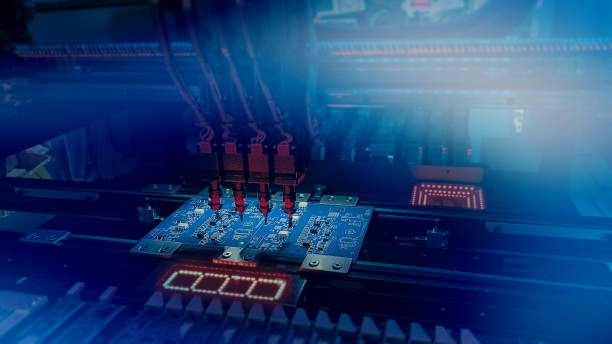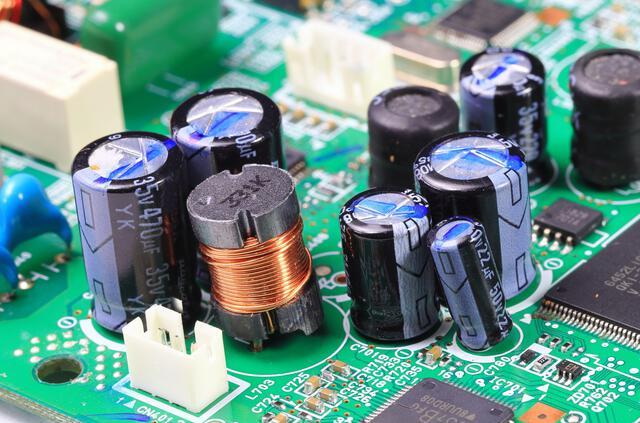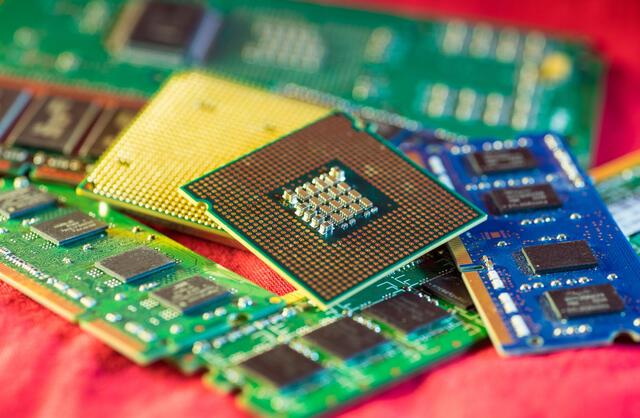Content Menu
● Understanding Flex PCBs and SMT Assembly
● Key Benefits of Flex PCB in SMT Assembly
>> 1. Space Efficiency
>> 2. Weight Reduction
>> 3. Enhanced Reliability
>> 4. Cost-Effectiveness
>> 5. Improved Thermal Management
>> 6. Versatility in Design
>> 7. Resistance to Environmental Factors
>> 8. High-Density Interconnections
>> 9. Simplified Manufacturing Process
>> 10. Reduced Assembly Errors
● Applications of Flex PCB in SMT Assembly
● Challenges in Flex PCB SMT Assembly
● The Manufacturing Process of Flex PCB
● Future Trends in Flexible PCB Technology
● Conclusion
● FAQ
>> 1. What materials are used in flex PCB manufacturing?
>> 2. How does flex PCB improve reliability?
>> 3. Can flex PCBs be used in high-temperature applications?
>> 4. What industries benefit most from flex PCB technology?
>> 5. How does SMT assembly enhance flex PCB production?
● Citations:
Flexible printed circuit boards (Flex PCBs) have revolutionized the electronics industry by offering a versatile solution for various applications, especially in surface mount technology (SMT) assembly. Their unique properties provide numerous advantages that enhance performance, reduce costs, and improve reliability. This article explores the benefits of using Flex PCBs in SMT assembly, detailing their characteristics, applications, and the reasons behind their growing popularity.

Understanding Flex PCBs and SMT Assembly
Flex PCBs are made from flexible materials, typically polyimide or polyester, which allow them to bend and conform to different shapes. This flexibility is essential for modern electronic devices that require compact designs and efficient space utilization. SMT assembly involves placing electronic components directly onto the surface of a PCB without the need for drilled holes, which is ideal for Flex PCBs due to their lightweight and flexible nature.
Key Benefits of Flex PCB in SMT Assembly
1. Space Efficiency
Flex PCBs can be designed to fit into tight spaces and can be bent or curved to accommodate various device shapes. This characteristic allows manufacturers to create more compact devices without sacrificing functionality. The reduction in size can lead to lighter products, which is particularly beneficial in industries like aerospace and consumer electronics.
2. Weight Reduction
Compared to traditional rigid PCBs, Flex PCBs are significantly lighter. This reduction in weight is crucial for portable devices where every gram counts. For instance, using Flex PCBs can decrease the overall weight of a smartphone or wearable device by up to 75%, enhancing user experience through improved portability.
3. Enhanced Reliability
The fewer interconnections in Flex PCBs minimize potential failure points. By eliminating connectors and reducing solder joints, manufacturers can create more reliable circuits that are less susceptible to mechanical stress and fatigue. This reliability is particularly important in applications exposed to vibration or movement, such as automotive and medical devices.
4. Cost-Effectiveness
Although the initial manufacturing cost of Flex PCBs may be higher than traditional rigid boards, they often result in lower overall costs due to reduced assembly time and fewer components required for connectivity. The streamlined assembly process also decreases labor costs and minimizes errors during production.
5. Improved Thermal Management
Flex PCBs can dissipate heat more effectively than rigid boards due to their design flexibility and material properties. This enhanced thermal management is critical for high-performance applications where heat generation is a concern, ensuring that components operate within safe temperature ranges.
6. Versatility in Design
The flexibility of Flex PCBs allows designers to create complex shapes and configurations that would be impossible with rigid boards. This adaptability enables innovative product designs that meet specific functional requirements while maintaining aesthetic appeal.
7. Resistance to Environmental Factors
Flex PCBs are often designed to withstand harsh environmental conditions, including exposure to moisture, chemicals, and temperature fluctuations. Their resistance to these factors makes them suitable for applications in industries such as automotive, aerospace, and medical equipment.
8. High-Density Interconnections
The ability to place components closer together on a Flex PCB facilitates high-density interconnections. This capability is essential for modern electronic devices that require numerous components packed into a small area without compromising performance.
9. Simplified Manufacturing Process
The automation involved in SMT assembly simplifies the manufacturing process for Flex PCBs. Automated pick-and-place machines can accurately position components on the flexible surface, reducing manual labor and increasing production efficiency.
10. Reduced Assembly Errors
With fewer components and simplified designs, the likelihood of assembly errors decreases significantly. Automated processes further enhance precision, leading to higher quality products with fewer defects.
Applications of Flex PCB in SMT Assembly
Flex PCBs are utilized across various industries due to their unique advantages:
- Consumer Electronics: Smartphones, tablets, wearables (smartwatches), and other portable devices benefit from the compactness and flexibility of Flex PCBs.
- Automotive: Used in advanced driver-assistance systems (ADAS), dashboards, and control units where space is limited.
- Medical Devices: Essential for compact medical equipment such as portable monitors and diagnostic tools that require flexibility.
- Aerospace: Ideal for applications where weight reduction is critical without compromising reliability.
- Industrial Equipment: Used in robotics and automation systems where flexibility enables better integration into complex machinery.

Challenges in Flex PCB SMT Assembly
While there are numerous benefits to using Flex PCBs in SMT assembly, some challenges must be addressed:
- Higher Initial Costs: The manufacturing costs for Flex PCBs can be higher due to specialized materials and processes.
- Complexity in Design: Designing Flex PCBs requires careful consideration of bending radii and component placement to avoid stress on solder joints during flexing.
- Handling Difficulties: Due to their thinness and flexibility, handling Flex PCBs during assembly requires special fixtures or carriers to maintain alignment and prevent damage.
The Manufacturing Process of Flex PCB
The manufacturing process of Flex PCBs involves several steps:
1. Material Preparation: The base material (usually polyimide or polyester) is prepared by applying copper foil onto it.
2. Patterning: A photoresist layer is applied over the copper foil, followed by exposure to UV light through a mask that defines the circuit pattern.
3. Etching: Unwanted copper is removed through an etching process, leaving behind the desired circuit traces.
4. Drilling: Holes are drilled for vias or mounting components as needed.
5. Plating: The drilled holes are plated with copper to create electrical connections between layers.
6. Finalizing: Additional layers may be added if needed (multi-layer flex circuits), followed by lamination with protective coatings.
This process allows manufacturers to produce highly intricate designs that meet specific application requirements while maintaining performance standards.
Future Trends in Flexible PCB Technology
As technology continues to evolve, several trends are shaping the future of flexible PCB technology:
- Increased Adoption in Wearable Technology: With the rise of smartwatches and fitness trackers, flexible circuits will become increasingly prevalent due to their lightweight nature and ability to conform to body shapes.
- Advancements in Materials: Ongoing research into new materials will enhance the performance characteristics of flex circuits, allowing them to withstand even harsher environments while maintaining flexibility.
- Integration with IoT Devices: As Internet of Things (IoT) devices proliferate, flexible circuits will play a crucial role in enabling compact designs that facilitate connectivity without compromising functionality.
- Sustainability Initiatives: Manufacturers are focusing on creating eco-friendly flex PCB solutions through sustainable materials and processes which align with global sustainability goals.
Conclusion
The benefits of using Flex PCB in SMT assembly are substantial, offering enhanced reliability, reduced weight, space efficiency, cost-effectiveness, improved thermal management, and design versatility. As technology continues to evolve toward smaller, more efficient electronic devices, the role of Flex PCBs will become increasingly important across various industries. Despite some challenges associated with their use, the advantages they provide make them an invaluable component of modern electronics manufacturing.

FAQ
1. What materials are used in flex PCB manufacturing?
Flex PCBs are typically made from polyimide or polyester materials which provide flexibility while maintaining electrical performance.
2. How does flex PCB improve reliability?
Flex PCBs reduce the number of interconnections and solder joints needed compared to rigid boards, minimizing potential failure points.
3. Can flex PCBs be used in high-temperature applications?
Yes, flex PCBs made from polyimide materials can withstand high temperatures up to 400°C without losing performance.
4. What industries benefit most from flex PCB technology?
Industries such as consumer electronics, automotive, aerospace, medical devices, and industrial equipment benefit significantly from flex PCB technology due to its adaptability and reliability.
5. How does SMT assembly enhance flex PCB production?
SMT assembly allows for automated placement of components on flex PCBs without drilling holes; this increases efficiency while reducing labor costs and potential errors during assembly.
Citations:
[1] https://www.venture-mfg.com/flex-pcb-assembly/
[2] https://www.proto-electronics.com/blog/flexible-pcbs-advantages-disadvantages
[3] https://www.pcbelec.com/flexible-pcb-applications.html
[4] https://www.raypcb.com/customized-rigid-flex-pcb/
[5] https://www.allflexinc.com/flexible-circuits/
[6] https://www.pcbelec.com/applications-of-flexible-pcb.html
[7] https://www.pcbonline.com/blog/flex-pcba.html
[8] https://jlcpcb.com/blog/flexible-pcb-manufacturing-process-and-advantages
[9] https://www.pcbgogo.com/Blog/Flexible_Printed_Circuits__Types__Benefits_and_its_Applications_by_PCBGOGO.html
[10] https://www.pcbnet.com/blog/what-is-a-flex-pcb/
[11] https://www.pcbelec.com/advantages-and-applications-of-rigid-flex-pcbs.html
[12] https://blog.epectec.com/pros-and-cons-of-using-flexible-pcbs-in-your-application
[13] https://emsginc.com/resources/10-common-pcb-applications/
[14] https://www.viasion.com/blog/what-is-flexible-pcba-advantages-and-processes/
[15] https://levisonenterprises.com/soft-printed-circuit-board-advantages-and-applications/
[16] https://www.viasion.com/blog/flex-pcb-types-manufacturing-advantages-and-applications/
[17] https://sfxpcb.com/advantages-and-benefits-of-flexible-pcb/
[18] https://www.agicorp.com/pcbps/smt-assembly-and-reflow
[19] https://www.protoexpress.com/blog/the-history-of-flexible-pcbs-and-their-modern-applications/
[20] https://www.hemeixinpcb.com/pcb-technology/flex-pcb-design-guidelines.html
[21] https://www.surfacemountprocess.com/what-is-a-rigid-flex-pcb-examples-cost-and-uses.html




















